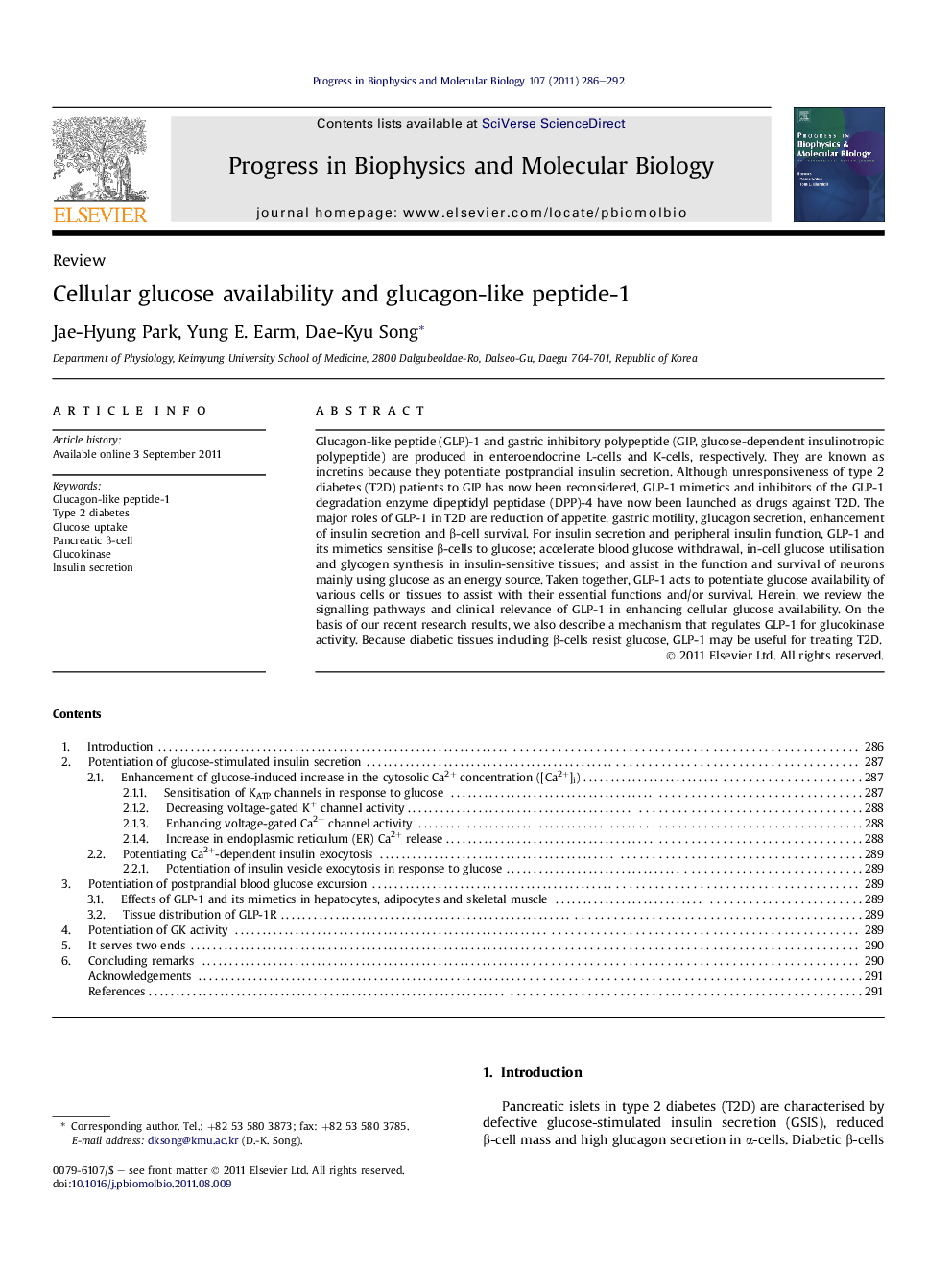| Article ID | Journal | Published Year | Pages | File Type |
|---|---|---|---|---|
| 2070160 | Progress in Biophysics and Molecular Biology | 2011 | 7 Pages |
Glucagon-like peptide (GLP)-1 and gastric inhibitory polypeptide (GIP, glucose-dependent insulinotropic polypeptide) are produced in enteroendocrine L-cells and K-cells, respectively. They are known as incretins because they potentiate postprandial insulin secretion. Although unresponsiveness of type 2 diabetes (T2D) patients to GIP has now been reconsidered, GLP-1 mimetics and inhibitors of the GLP-1 degradation enzyme dipeptidyl peptidase (DPP)-4 have now been launched as drugs against T2D. The major roles of GLP-1 in T2D are reduction of appetite, gastric motility, glucagon secretion, enhancement of insulin secretion and β-cell survival. For insulin secretion and peripheral insulin function, GLP-1 and its mimetics sensitise β-cells to glucose; accelerate blood glucose withdrawal, in-cell glucose utilisation and glycogen synthesis in insulin-sensitive tissues; and assist in the function and survival of neurons mainly using glucose as an energy source. Taken together, GLP-1 acts to potentiate glucose availability of various cells or tissues to assist with their essential functions and/or survival. Herein, we review the signalling pathways and clinical relevance of GLP-1 in enhancing cellular glucose availability. On the basis of our recent research results, we also describe a mechanism that regulates GLP-1 for glucokinase activity. Because diabetic tissues including β-cells resist glucose, GLP-1 may be useful for treating T2D.
